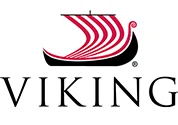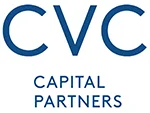 |
| (Clockwise) Bryan Armstrong, Zaineb Bokhari, Ben Herskowitz & Geoff Serednesky co-authored this article. |
The economic dislocation brought on by the COVID-19 pandemic has rippled through the global economy. In spite of this period of economic instability, momentum behind Environmental, Social and Governance is strengthening, particularly with respect to the social dimension of ESG.
What’s the fuss about ‘S’?
According to a recent investor study conducted by FTI Consulting, 57 percent of respondents believe corporate ESG programs are more important today and going forward compared to before the pandemic. Investors are paying close attention to the health and safety of employees as well as the resilience and governance of companies they invest in, all of which are key pillars of a traditional ESG program.
While many companies have taken decisive steps to safeguard their employees and implement business continuity measures, a shockingly high number of companies haven’t. According to Just Capital’s COVID-19 Corporate Response Tracker, 30 percent of America’s 301 largest publicly traded companies as of June 9, 2020, still hadn’t implemented remote work policies or modified work schedules, and 37 percent hadn’t yet implemented health and safety measures. While concerning in its own right, this indicates a potentially longer-term issue with companies’ risk mitigation strategies, which will continue to directly affect their ability to navigate COVID-19 and future crises successfully.
For investors, ESG is becoming a more important tool in helping them evaluate these non-financial risks. In fact, 62 percent of investors in our recent survey said they expect to use ESG strategies and related tools to a greater extent over the next 12-18 months to manage their own portfolios. Respondents indicated they’re increasingly using ESG in their investment decision-making process, primarily in two areas: first, to pick stocks—either screening out undesirable companies (44 percent) or identifying high-quality companies (40 percent) and second, to evaluate risk (39 percent).
| This article is featured in O'Dwyer's Aug. '20 Financial PR/IR & Professional Services PR Magazine. |
As adoption of ESG continues to accelerate in the investment community, we expect pressure on corporates to increase disclosure and transparency related to risk management will follow suit. This is particularly true given the inability of many companies to reliably forecast business trends in the current environment.
This adoption curve is also being aided by a growing body of evidence linking ESG to favorable stock performance. For example, a recent study administered by Fidelity International showed that during the COVID-19-driven market sell-off between February 19 and March 26, shares of companies that received better ratings (A or B) on their sustainability rating system outperformed the S&P 500 by 380 basis points, while those with lower ratings (C to E) underperformed by 740 basis points. This stock performance disparity supported Fidelity’s view that management teams making strong commitments to sustainability tend to be high-quality and their businesses more resilient during market dislocations and crises.
FTI’s recent investor study corroborates these findings, as 58 percent of investors believe those companies with above-average ESG practices have been more effective at managing business risks associated with the COVID-19 pandemic. Further, we found that 64 percent of investors also believe that companies with above-average ESG practices are better prepared for future pandemics, crises, and other black swan events.
Spotlight: potential ‘social’ risks
While the pandemic is serving as a catalyst for major changes in how companies and investors evaluate and manage risk, the underlying importance of non-financial risks has been increasing for some time. The significant increase and higher proportion of intangible assets over the past three decades has created a divergence between market values and book values, which has made conventional financial measures less meaningful, particularly in evaluating the resilience of companies during times of market dislocation.
As we look ahead, there are several top-of-mind risks for investors that fall within the social dimension of ESG that companies should be prepared for as they navigate through the pandemic.
Issue #1: privacy and data security
Increases in remote work and digitization as a result of COVID-19 directly increase companies’ exposure to data privacy and security risks. As is the case currently, privacy and security risks are amplified when new processes such as video conferencing are implemented and scaled quickly within organizations without the proper controls in place, including relevant corporate policies aimed at reducing user and corporate risk. As a consequence, incremental personal and proprietary data remain at risk to hackers looking to exploit these opportunities. In fact, according to the FBI, COVID-19 related cybersecurity threats reported to its Internet Crime Complaint Center were trending as high as 20,000 daily through early June of this year, with the year to date volume already exceeding what the IC3 had seen across all threats in 2019.
Failure to implement sufficient oversight of employee and customer privacy and data security can have an adverse material impact on a company’s performance and valuation. Data security issues can be quite costly, as was the case when Verizon lowered its purchase price of Yahoo by $350 million after security breaches exposed sensitive user information of more than a billion Yahoo users.
On a more acute—and hopefully, temporary—basis, private-sector companies are now using various forms of technology to identify, track and monitor the spread of COVID-19. According to a June McKinsey survey, checking employee temperatures is currently the most common tactic used to identify and isolate employees showing COVID-19 symptoms. Of the respondents whose companies are checking temperatures or plan to, more than half say daily temperature checks would be mandatory. Gathering and securely storing information such as this, among many others, presents a new set of risks that companies may not have fully contemplated yet.
For investors, data security remains at the forefront of social risks they care most about. While companies can’t completely eliminate the risk inherent in data collection and storage, they do have the power to strategically identify and manage the associated risks and communicate proactively to stakeholders their actions and mitigation plans.
Issue #2: human capital management
As companies implement cost-reduction initiatives, including staff reductions and furloughs, regulators have seen a material increase in whistleblowers who no longer fear employer retaliation. Per a Washington Post article on April 16, thousands of Occupational Safety and Health Administration complaints have been filed against companies for workplace safety concerns. The article indirectly highlights investors’ inability to make informed investment decisions without accurate, reliable, and material ESG disclosures, stating, “collectively, the records depict the desperation of the employees as well as their frustrations with employers who in their view were at best simply unprepared for a pandemic and at worst callously unconcerned with worker safety.”
Beyond OSHA complaints, per a May 26 Reuters article, Steven Peikin, the agency’s co-head of enforcement, noted that the Securities and Exchange Commission fielded about 4,000 complaints from mid-March to mid-May, representing a year-over-year increase of 35 percent.
Although whistleblower policies have been around for many years, this level of activity is unprecedented and has emboldened the workforce to more readily take action as and when they deem appropriate. Accordingly, companies that have been outspoken about how well they’re treating their workforce may face a backlash if that sentiment is not shared among employees.
To ensure employees feel protected—and thus protect against value-destroying lawsuits and/or public complaints—companies must establish a culture of safety in which employees see, hear and experience a sustained effort to keep them safe and well. Communications alone may help them to understand policies, but the effort must go further to define the behaviors that are expected, train leaders to be positive role models, and incentivize teams to hold one another accountable. Safety must be seen as a shared responsibility with regular reminders of what is expected.
Issue #3: widening executive pay gap
In addition to workforce reductions and furloughs, some companies also reduced executive compensation to help rein in costs. According to executive compensation experts, Semler Brossy, nearly 20 percent of Russell 3000 companies had made explicit announcements regarding executive and director pay actions in their SEC filings through the month of May.
However, as the process of reopening and resuming economic activity begins, companies must take special care as they contemplate returning executive compensation to pre-crisis levels. This is particularly true if employee pay and benefits do not recover in parity or as quickly as the executive suite. For publicly traded companies, this will be highly visible in their corporate disclosures regarding CEO pay ratio, which has been mandated since 2018.
While to date, CEO pay ratios have not evoked widespread concern from shareholders or other stakeholders, there are admittedly wide variations in the data across industries. For example, a 2018 Equilar study indicated that while the CEO pay ratio for BICS-classified Utilities and Energy companies cap out around 300-to-1, Consumer Discretionary and Consumer Staples companies exhibit a larger disparity in pay, with the top CEO pay ratios upwards of 750-to-one. Companies that anticipate a meaningful increase in this ratio should expect heightened scrutiny, especially if furloughed employees are not fully reinstated as ‘normal’ business activity resumes.
Risks are also high for companies that receive taxpayer-funded aid—a point of view that came across quite strongly in our Shifting Expectations survey. Respondents indicated that Americans are not willing to bail out most industries and therefore organizations that receive aid will be expected to both retain staff levels, pay, and benefits and provide considerable transparency on executive pay and corporate expenditures.
Preparing for the next black swan event
As we look beyond the current pandemic, investors will undoubtedly amp up the pressure on companies to provide greater transparency and disclosure around material risk factors in their industry and business as well as the governance and controls they have put in place to manage them. When done well, an effective ESG program provides a natural platform from which to organize, align, and implement enhancements to a company’s enterprise risk management, while at the same time ensuring “full credit” is received for their efforts from key stakeholders.
***
Bryan Armstrong is Senior Managing Director & Head of Capital Markets in the Americas at FTI Consulting. Zaineb Bokhari is Managing Director, Capital Markets, FTI Consulting. Geoff Serednesky is Managing Director, Research, FTI Consulting. Ben Herskowitz is Senior Director, Capital Markets, FTI Consulting.


 FGS Global represents private equity firm Thoma Bravo as it makes a $4.6B bid for Darktrace, a UK-based cybersecurity artificial intelligence firm.
FGS Global represents private equity firm Thoma Bravo as it makes a $4.6B bid for Darktrace, a UK-based cybersecurity artificial intelligence firm.
 Edelman handles Viking Holdings, the river and ocean luxury cruise line that plans to raise $1B via an IPO priced in the $21 to $25 per share range.
Edelman handles Viking Holdings, the river and ocean luxury cruise line that plans to raise $1B via an IPO priced in the $21 to $25 per share range. Teneo is handling the initial public offering of CVC Capital Partners, one of Europe’s largest private equity firms with nearly $200B in assets under management.
Teneo is handling the initial public offering of CVC Capital Partners, one of Europe’s largest private equity firms with nearly $200B in assets under management. Brunswick Group represents Endeavor Group Holdings as it agrees to go private via its acquisition by Silver Lake technology investment firm, which is handled by Edelman Smithfield.
Brunswick Group represents Endeavor Group Holdings as it agrees to go private via its acquisition by Silver Lake technology investment firm, which is handled by Edelman Smithfield.


 Have a comment? Send it to
Have a comment? Send it to 
No comments have been submitted for this story yet.